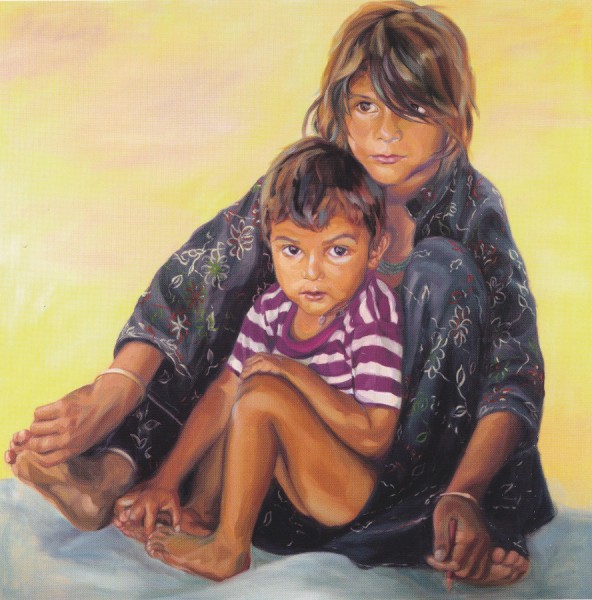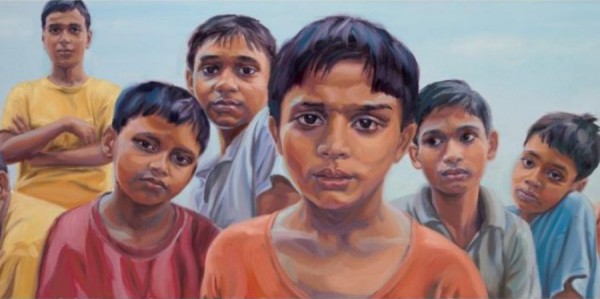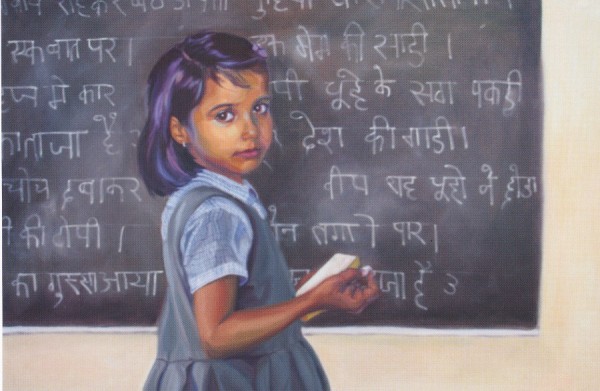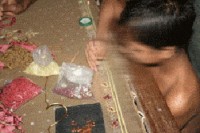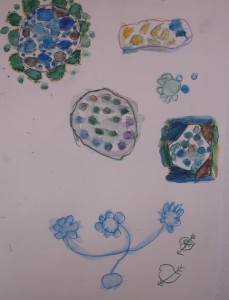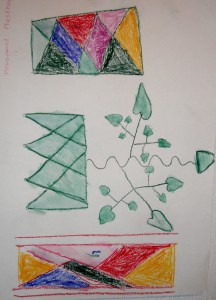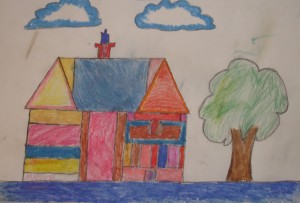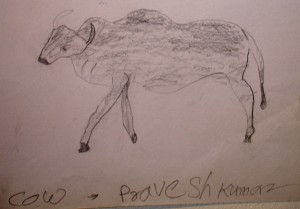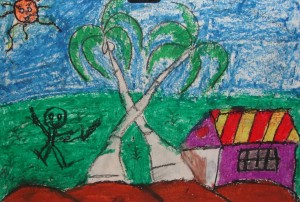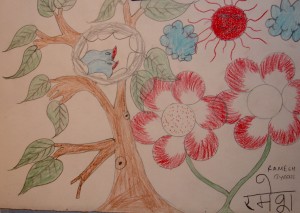Last week I went to the opening night of an exhibition of paintings by Claire Phillips, a Sussex portrait artist, at the Oxo Tower in London. The title of the exhibition is ‘Reclaiming Childhood: Face To Face With Child Labour In India’. For several years Claire has worked with the charity ‘Bachpan Bachao Andolan’, which is a charity that rescues children from slave-labour in India. Some of the children come from factories and from domestic service. Many come from embroidery sweat-shops, where they have been stitching for hours and hours each day. They have no education, no health-care, no freedom, no time to play, and no kindness. If they fall asleep while working they are beaten. If they cry, they are beaten. They can’t see any way out or any future. Children are particularly desirable to embroidery sweatshops; they have good eyesight, nimble fingers, and can do detailed work that is more challenging for adults. One particular irony in India is that the numbers of children who are estimated to be in bonded labour instead of education is roughly equivalent to the number of adults who are out of work. This is the cost of the cheap embroidery that we buy in the West.
As embroiderers we know just how long it takes to hand-stitch sequins, or to do exquisite metal-thread work, or to stitch on tiny beads. How often do we buy a piece of embroidered clothing, or a bag or scarf, which has been hand-stitched in India? When we do, how often do we stop to ask ourselves why it is so incredibly cheap? Why not apply a quick bit of logic. Start with the price we pay, and subtract the cost of the shop that we bought it from (staff, premises, business rates etc). Subtract the cost of handling and shipping it across the sea from India. Subtract the cost of the wholesaler in India. Subtract the cost of transporting it within India. On top of the costs at each stage, add a profit margin. Once you have taken off all that, what is left? Peanuts. In that case, how can the person at the very end of the chain, the person who stitched it, possibly have been paid a decent living wage? And how likely is it that this person was a child?
The lucky ones are rescued by the charity. Some are returned to parents, and others stay in children’s homes run by the charity. Here they receive care and kindness, proper food, education and time to play. They learn to trust people; they learn hope, and they learn that they can have a future.
The sound-track and the written commentary to the exhibition tell us about the conditions that some of the children were rescued from, and the painful stories that led to their exploitation. However, the exhibition is lighter in spirit than I expected. The paintings show the children just as children, as Claire met them; playing, playful, exploring, mischievous, and fun. These are children who have a second-chance at childhood. It takes them time to learn to trust the adults around them – but once they do, their sense of fun is tremendous.
The art on one wall is a poignant reminder of what these children have lost and regained. There are two sets of pictures done by the children; the first set is soon after they are rescued, when their drawings tend to be timid and unconfident. Some, like the ones below, show details of the embroidery work they had to do for hours – in this case Zari (goldwork).
Other pictures are done by children who have been at the centre for longer and who have started to experience the world as free children should be able to experience it. These pictures fill the page with expressive, joyful images of the world around them; houses, the sun, a cow, or flowers. They have recovered a sense of childhood that most western children can take for granted.
The exhibition is on at The Oxo Tower until the 20th July, and will be at Worthing Museum and Art Gallery from 13th September 2014 until the 24th January 2015. Do go and see it if you can.
For more information on the charity, go to http://www.bba.org.in/
For more on Claire’s art, go to http://www.clairephillips.com/
There is also a talk by Kailash-Satyarthi at the Oxo Tower on the closing day of the London exhibition (20th July). Kailash is rated as one of the top human rights defenders of the world today. He and his colleagues literally risk their lives in the process of freeing enslaved children, and they have rescued around 80,000 children. In the painting by Claire (bottom left) he is pictured with some of the children rescued by Bachan Bachao Andolan. They are having a school lesson, something taken for granted by western children.
http://www.oxotower.co.uk/events/talk-human-rights-defender-kailash-satyarthi/
Thank you to Claire Phillips for permission to include images of her work on this blog.










